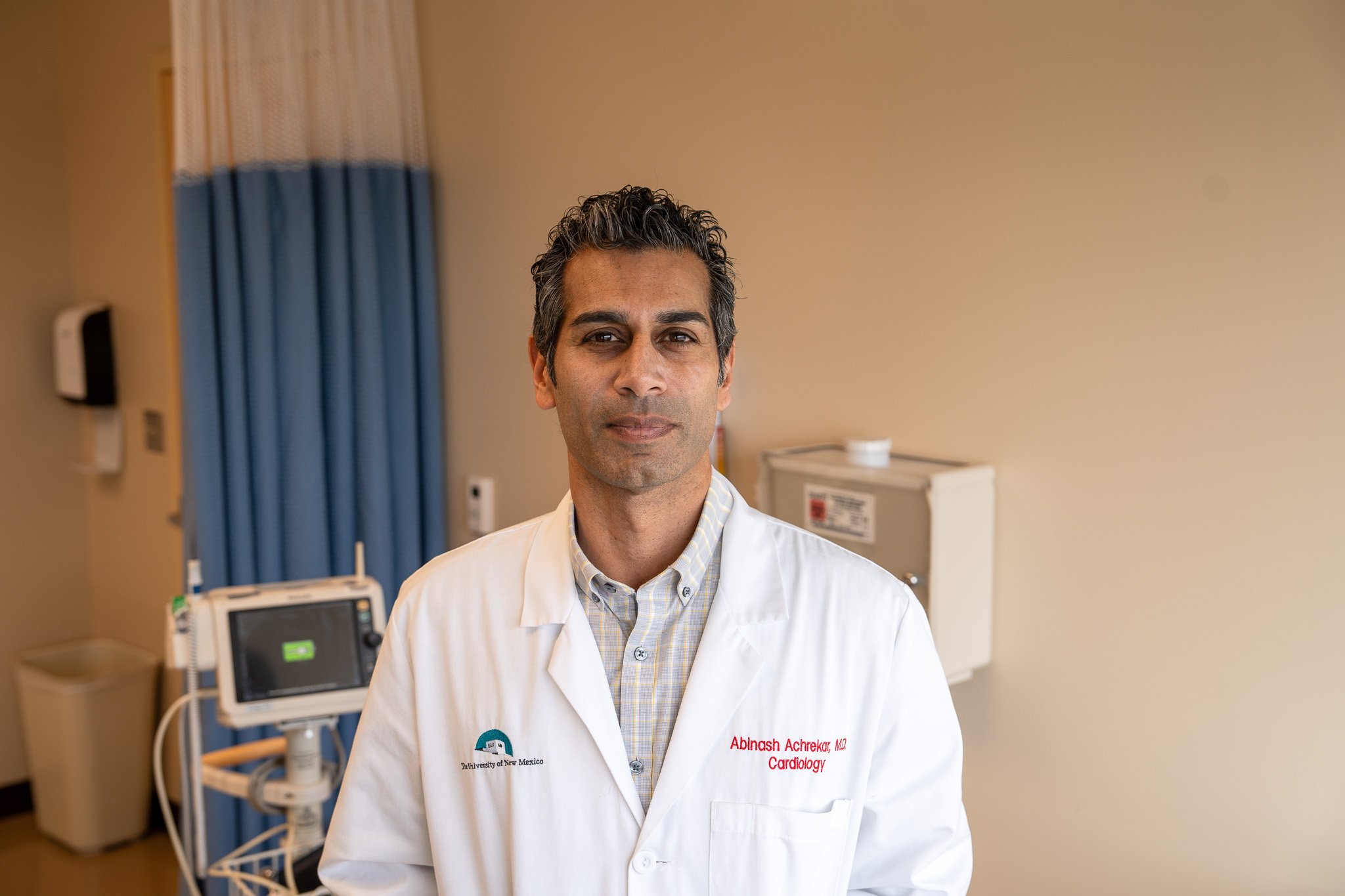Now that Valentine’s Day is here, hearts are everywhere you look. Red hearts and pink hearts adorn store windows, aisles and flower shops, and there is plenty of heart-shaped candy, cards and balloons to go around.
While all these symbols of love may have you thinking about your valentine – heart health experts want you to zero in on one heart in particular: your own.
February is American Heart Month, and taking care of your heart is critically important. According to the Centers for Disease Control and Prevention (CDC), heart disease is the leading cause of death for men, women and people of most racial and ethnic backgrounds in the U.S.
Abinash Achrekar, MD, MPH, is the medical director of cardiology at The University of New Mexico Sandoval Regional Medical Center – a Campus of UNM Hospital (SRMC) – where there is a wide array of heart health services for patients.

“At SRMC, we've developed a comprehensive cardiovascular service line including general cardiology, electrophysiology and a congestive heart failure clinic, as well as a lot of testing that our patients require, like echocardiograms, EKG stress testing and even nuclear stress testing.”
Achrekar says people should be thinking about heart health this month and every month of the year because prevention is key. Achrekar explained heart disease is nearly preventable, if identified and treated early.
Dr. Achrekar’s Heart Health Tips
- Know Your Numbers: Blood Pressure and Cholesterol
- Eat a Heart Healthy Diet
- No Smoking
- Get Moving – At least 30 minutes, five days a week
Know your Numbers
Knowing your numbers is one of the most important steps to preventing heart disease.
“Just knowing your blood pressure lowers your blood pressure,” Achrekar says. “Knowing your cholesterol level, knowing your glycemic or sugar level, will improve those numbers. That's because you're more aware of it. You're starting to make diet choices and exercise choices, as well as medication choices with your primary care doctor.”
So, what are good numbers?
Blood pressure is measured in two numbers. The top number is the systolic blood pressure – or the pressure your blood is pushing against your artery walls when your heart beats. The bottom number is the diastolic blood pressure – or the pressure your blood is pushing against your artery walls while the heart muscle rests between beats. For most people, Achrekar says a good number should be less than 130 over 80, but ideally the normal range is 120 over 70.
“Treating high blood pressure early is very important,” Achrekar says. “High blood pressure is the silent killer. You feel fine until you're not, and usually the presentation is stroke or heart attack.”
You should also know your cholesterol number.
View this post on Instagram
“Most people know ‘bad’ cholesterol, that's the LDL (low-density lipoprotein),” Achrekar says. “We want an LDL number less than 130. For those who have heart disease, definitely less than 100 or less than 70.”
Achrekar recommends getting your blood pressure and cholesterol checked at least once a year during a regular visit with your primary care provider.
Heart Healthy Diet and No Smoking

What you put into your body has a big impact on your heart. Achrekar says to focus on a heart-healthy diet centered around lean fats, proteins, non-processed foods, fewer carbohydrates, increased fruits and vegetables, nuts and fish. The benefits to changing your diet happen fast.
“We see changes almost immediately,” he says. “Not only in your inflammation, in your bloodstream we see differences in fat deposition within the liver. These changes are rapid.”
Quitting smoking also greatly reduces risk for heart disease and stroke.
Get Moving!
A sedentary lifestyle, or sitting for long periods of time, increases your chance for high blood pressure and heart disease, but it doesn’t take a lot of physical activity to combat that risk. The American Heart Association recommends 150 minutes of physical activity per week, that’s about 30 minutes five days a week.
“And that's only moderate intensity,” Achrekar says. “That's taking a very brisk walk for 30 minutes. I tell my patients to start with a five-minute walk and work up to 30 minutes a day. That reduces risk significantly.”
Every step you take to prevent heart disease is worth it, he says.
“You really don't want to have to see a cardiologist,” Achrekar says. “Because that typically means that something has already happened, usually a cardiac event.”
He says it’s important to remember that 25% of people who have massive heart attacks will die.
“They never make it to the hospital. So, we want to do all we can to prevent anyone from going down that road.”
